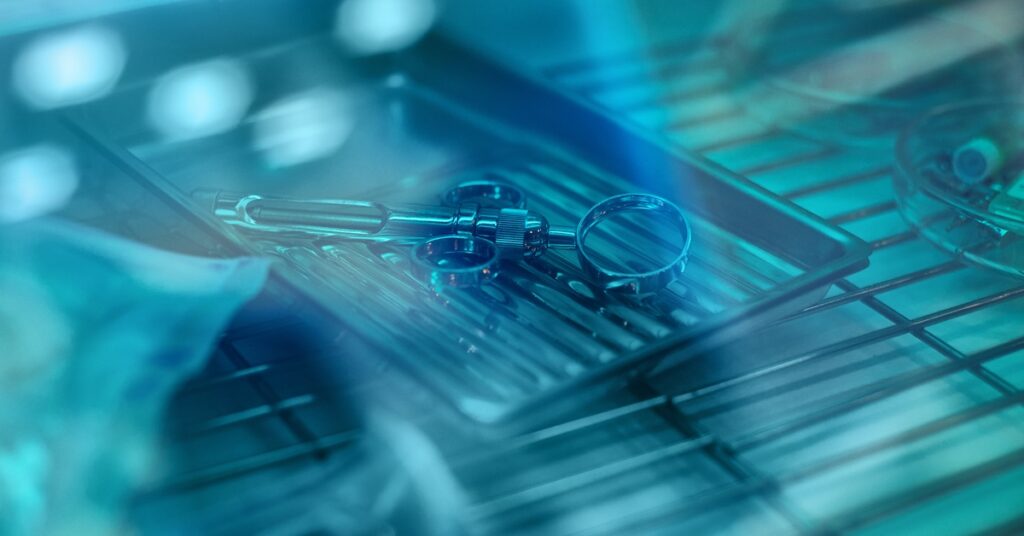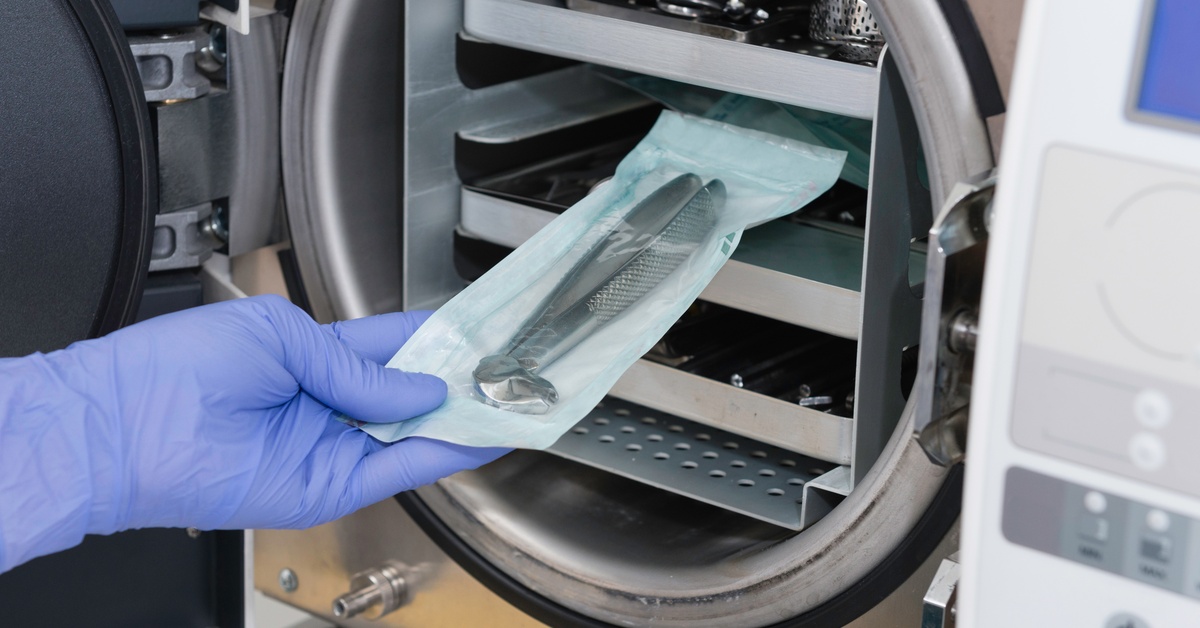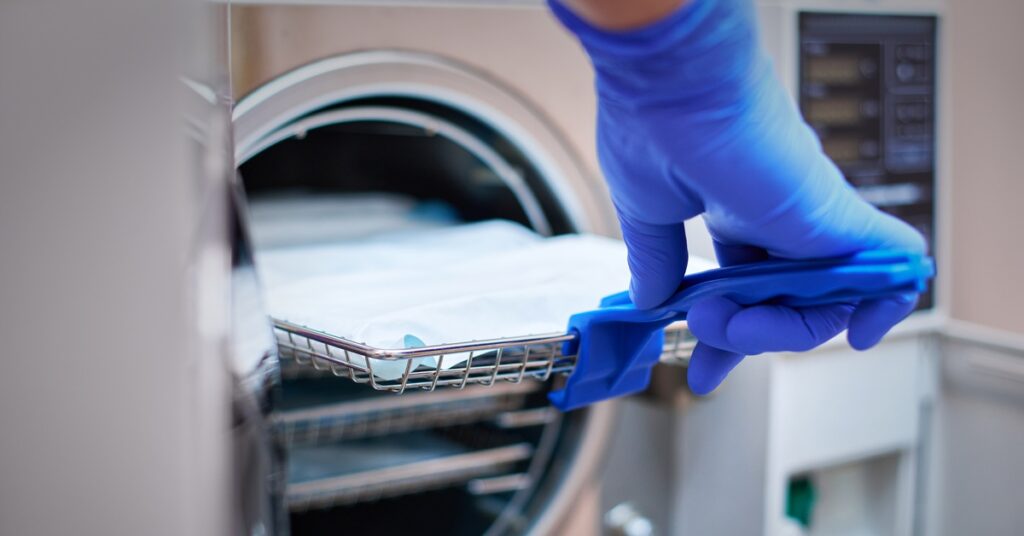Before reusable medical devices reach the market, manufacturers must prove the safety and efficacy of their reprocessing procedure through sterilization validation. Numerous tests go into verifying and validating each type of sterilization. By observing sterilization parameters and packaging efficacy, manufacturers ensure their devices offer safe and lasting solutions for healthcare professionals and patients.
One of the most common and powerful types of sterilization in healthcare is steam sterilization. Let’s look at the process of steam sterilization validation, how it works, and what kind of testing it requires.
What Is Steam Sterilization?
Steam sterilization is the most common sterilization method in modern healthcare settings. It uses high temperatures and pressures to kill microorganisms on a device quickly and reliably. Steam sterilization has been a reliable method for reprocessing reusable medical devices for 100 years. It’s also extremely efficient and cost-effective, making it the go-to choice for any applicable device.
Despite their popularity and reliability, steam sterilization processes require careful validation before manufacturers can approve and sell their devices.
Device Considerations for Using Steam Sterilization
One of the goals of sterilization validation is to confirm a reprocessing procedure is safe for the medical device you are testing. While steam sterilization is effective, some materials and designs aren’t compatible with it. If manufacturers want to use steam sterilization in their device’s reprocessing procedure, they need to factor a few things into the design.
First and foremost is the ability to withstand moisture. Because steam sterilization uses water, it doesn’t work for device materials that cannot hold up to high moisture and humidity levels. Similarly, the device must be able to handle high pressure and temperature. Most plastics or adhesives won’t work, as they degrade and lose their efficacy during the steam cycle.
Manufacturers must also design their devices so that the steam can penetrate the terminal packaging and sterilize the medical device. The product design must also allow for adequate air removal to prevent damage. These design considerations ensure the device is still functional and effective after the sterilization process.
Determining Sterilization Parameters
No two reusable medical devices are the same, so the exact details of the sterilization process will change from product to product. Part of the goal of the validation process is to determine these parameters so manufacturers can prove the sterilization. This is a vital part of developing adequate instructions for use so that end users can successfully replicate the steam sterilization process. Here are the parameters manufacturers look at during steam sterilization validation.
Sterilization Temperature
Steam sterilization should take place at a temperature that is high enough to kill bacteria and other microorganisms without damaging the device or its materials. This temperature is typically between 121 and 135 degrees Celsius. However, the precise temperature requirement will depend on the materials and design of the device itself.
Cycle Time
Validation also helps to determine the cycle time requirements for steam sterilization. This refers to how long the medical device should be exposed to the set temperature and pressure levels.
Steam sterilization cycles can last around 3–30 minutes, depending on the device’s intended use, potential soils, and the complexity of the design. Device dimensions and intended load sizes are important considerations to make when determining appropriate exposure times. Typically, the higher the exposure temperature, the shorter the exposure time, as long as there is appropriate air removal or displacement in the cycle.
Sterilant Contact
Sterilant contact involves the sterilization pressure and air removal necessary for adequate sterilization to take place. Pressure levels will correlate with sterilization temperature. Meanwhile, the sterilizer must create appropriate air removal so the steam reaches and penetrates the device packaging, enabling effective and reliable sterilization.
Dry Time
Finally, sterilization validation looks at the time it takes to eliminate residual moisture on the device after the steam cycle. Lingering moisture may encourage the growth of remaining microorganisms on the device. Analyzing dry time in bespoke validation tests ensures that the device remains sterile and safe after the end of the reprocessing procedure and until users need it again. Historically, dry times are 20 minutes or longer.
Creating a Sterilization Validation Strategy
Creating an adequate testing strategy is a critical part of steam sterilization validation. Carefully choosing test factors and parameters guarantees the results of validation are repeatable and reliable. Manufacturers and validation professionals use methods outlined in AAMI TIR12, ANSI/AAMI/ISO TIR 17665 to design appropriate validation strategies for their reusable medical devices.
One important factor to consider is the microorganism that manufacturers use as a biological indicator for steam sterilization tests. In steam sterilization validation, the spore Geobacillus stearothermophilus is popular because of its resistance to high temperatures. Testing with this microorganism demonstrates that the sterilization process is effective even with hard-to-kill contaminants.
Manufacturers also must consider where to place biological indicators. By placing Geobacillus stearothermophilus spores in hard-to-reach areas, such as lumens, cannulas, mated surfaces, and heat sink areas, manufacturers can reliably test the efficacy of the sterilization process by using worse case devices.
Steam Sterilization Validation Steps
Steam sterilization validation involves multiple test types to prove the success of the reprocessing procedure. Many of these tests revolve around the device design, the needs of the manufacturer, and the intended market for the device. The most vital steam sterilization validation tests include steam efficacy testing, steam dry time studies, steam thermal profile studies, and real-time shelf-life studies.
Steam Efficacy Testing
Sterilization efficacy tests determine how successful a specific form of sterilization is at eliminating microorganisms from the medical device. This test involves running a steam sterilization cycle for half the intended exposure time with a biological indicator challenge of 106 spores of Geobacillus stearothermophilus, a highly resistant microorganism to the process.
Half-cycle testing, also known as the “overkill method”, is part of the rigorous validation strategy that proves the efficacy of the steam sterilization process, even in worst-case scenarios.
Steam Dry Time Studies
Dry time studies involve running full cycles to determine whether a device eliminates or maintains moisture after a steam sterilization cycle. Proper drying times are necessary in order to ensure that all forms of moisture are minimized following sterilization processing. Moisture could provide a vector for microorganisms to enter a closed containment system and contaminate the load. There are many variables that can cause a sterilization containment system to retain moisture. A successful test proves that moisture does not linger or allow microorganisms to enter or grow within the device’s packaging system, which helps to minimize the chances of a ‘wet pack’ following sterilization processing.
Steam Thermal Profile Study
Thermal profiling ensures that the thermal conditions of the steam sterilization cycle adequately penetrate the device packaging. It also proves that the steam cycle reaches and maintains ideal temperature parameters throughout sterilization. Thermal profiling verifies this with the placement of temperature sensors in set locations throughout the sterilization chamber and/or packaging system. Finally, testers can monitor temperature conditions during the sterilization cycle.
Real-Time Shelf-Life Study
A real-time shelf-life study monitors the condition of the medical devices after a steam sterilization cycle. This test focuses on the ability of the device’s packaging system to maintain a sterile barrier for a period of time, typically between 30-365 days or even longer. During storage, the device is moved weekly (to simulate handling in a healthcare setting) and the storage conditions monitored and documented. This determines adequate storage conditions to maintain the sterility and efficacy of the device.
Steam Sterilization Validation at Highpower
Highpower Labs has decades of experience performing steam sterilization validation studies for reusable medical devices. Learn more about our medical device sterility testing when you visit our website or contact our team today.


